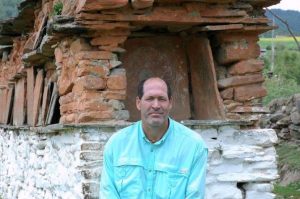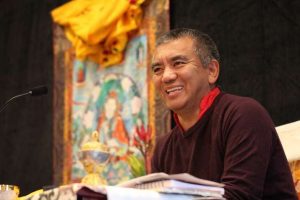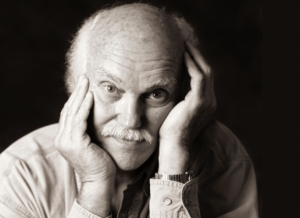
The Antoni Tàpies Foundation initiated a year-long commemoration titled Año Tàpies (Tàpies’ Year) on 13 December that celebrates the centennial birth anniversary of Catalan artist Antoni Tàpies (1923–2012). Paying homage to Tàpies’s life and work, the foundation is set to present exhibitions and events exploring his connections with spirituality, art, and science, inviting a discourse with other renowned artists, such as writer Irene Solà and photographer John Baldessari.
Known for once saying, “In light of the teachings of Chan, all daily activities . . . from the way one cooks and eats to our organism’s activities that are considered the most innoble — everything is made sacred, transformed, and positioned at its rightful worth,” Tàpies combined European ideas with the wisdom of Asia to develop a unique style all his own.
The inaugural event, “Tàpies. La huella del zen” (Tàpies. The Zen Footprint), serves as an introductory exhibition portraying Tàpies’s deep-rooted interest in Zen Buddhism, drawing inspiration from the teachings of Japanese monks including Hakuin (1686–1769). It showcases a selection of paintings, ceramics, and drawings reflecting his interpretation of Zen philosophies and marks the artist’s integration of Asian influences into his work as a means of challenging the dominance of the West, particularly post-World War II.
The second exhibition, “A = A, B = B,” directed by Pep Vidal, highlights the fusion of art and science, an essential facet of Tàpies’s artistic ideology. This exhibition resurrects scientific lectures from Tàpies’s book La Nueva Vision del Mundo (The New Vision of the World, Ediciones Polígrafa 1954), interweaving works by diverse artists such as Irene Solà and John Baldessari. The display is aimed at combining artistic and scientific exercises, delving into experiment and observation.

Throughout the centennial, the Antoni Tàpies Foundation will present a multitude of events across various locations, intending to extend Tàpies’s artistic legacy. The planned activities encompass diverse programs, such as the Antoni Tàpies-UPF Chair and the Teresa Barba critical writing contest, targeting students and fostering the investigation of art and thought.
The celebration extends to creative practices, with exhibitions such as “Tàpies a través de la palabra” (Tàpies through the Word) set to be displayed in various Barcelona libraries. Moreover, musical performances inspired by the artist’s favorite pieces, titled “La maleta de Tàpies” (Tàpies’s Suitcase), will be presented by students from the Catalan Superior School of Music.
The commemoration encompasses cycles of public programming, including “Las sillas de Tàpies” (Tàpies’s Chairs), focusing on oral memory, and the “Hoy es Tàpies” (Today is Tàpies) cycle, offering interdisciplinary talks. The centennial festivities will culminate in a creative display at the parliament building, where musical interpretations inspired by Tàpies’s works will take center stage.
The Año Tàpies initiative endeavors to explore the diverse aspects of Tàpies’s life and work, providing an immersive journey into his artistic legacy and interdisciplinary approach, setting the tone for a year of comprehensive celebrations.
Foundation director Laurence Rassel described Tàpies as a thoroughly contemporary artist after his death in 2012, emphasizing that his influence stretches well into the 21st century.

Speaking of Tàpies’ interest in the human form, Rassel said: “It was always there, from the first drawings like Self-Portrait from 1945 to his last works. The human condition, philosophy, politics . . . everything passes through the body.” (El Pais)
However, Tàpies’ son Miquel offered another explanation. “It was when he realized how difficult it had become for him to put his socks on,” he told reporters in 2012. “This banal realization may have triggered a process that made him return to the human body, to the human condition.” (El Pais)
Born in Barcelona, Tàpies devoted his life to art while in his 20s after suffering a near-fatal heart attack and convalescing in the Spanish mountains for two years. He studied philosophy, including that of Jean-Paul Sartre, and read Asian thought widely. He lived mainly in Barcelona and was one of Spain’s best-known artists of the latter half of the 20th century, with much of his work in the surrealist format, but experimenting in a number of other styles.
See more
Antoni Tápies Hommage (Slash Paris)
Matter painting, Zen Buddhism, science, and Antoni Tàpies (Catalan News)
‘Long live Tàpies’: Buddhism, art and science to celebrate Antoni Tàpies’s centennial (El Pais)
Tàpies, the late artist turned to flesh (El Pais)
Related news reports from BDG
Second Edition of the Buddhist Film Festival of Catalonia, Spain to be Held in October 2024
Tibetan Buddhism and Carmelite Spirituality to be Featured in Interreligious Encounter in Ávila, Spain 2024
Buddhist Artist Bernice Bing Receives Solo Show at the Asian Art Museum
Sakyadhita Spain to Host 2nd International Symposium of Spanish-Speaking Buddhist Women
Forty-meter Buddha Statue Planned in Spain
Spain Hosts Conference of the European Buddhist Union














